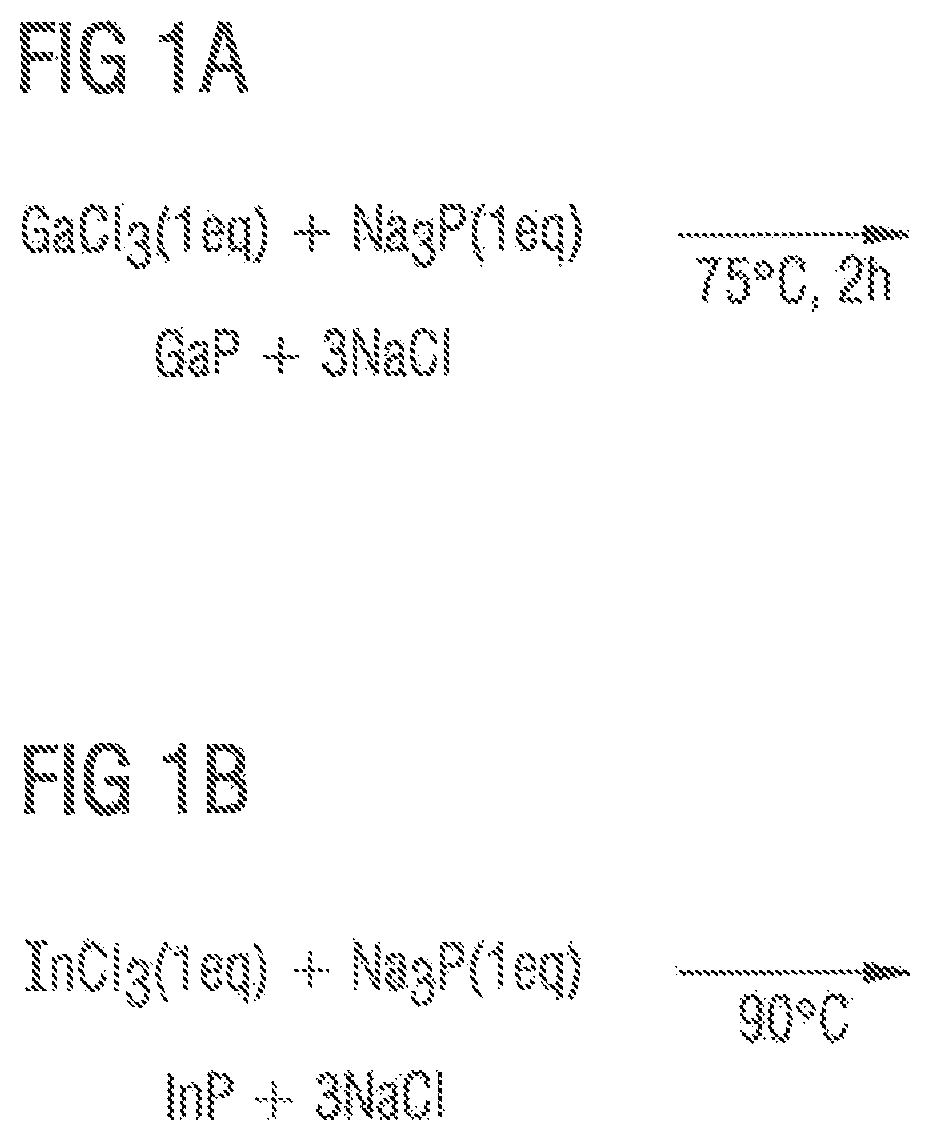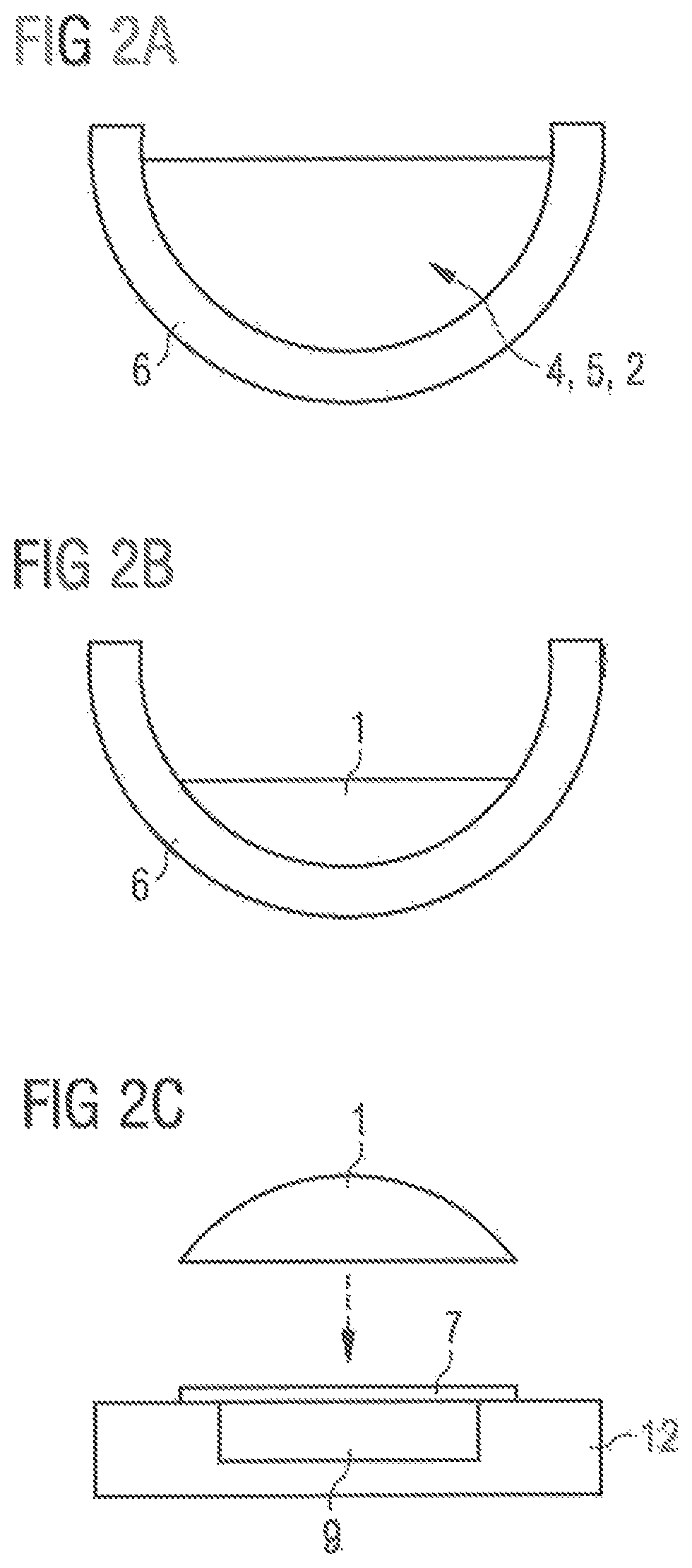Method for producing an output coupling element for an optoelectronic component and output coupling element
an optoelectronic component and output coupling element technology, applied in the direction of luminescent compositions, semiconductor devices, chemistry apparatus and processes, etc., can solve the problems of limited indium phosphide quantum dots, etc., and achieve the effect of efficiently and simply producing an output coupling elemen
- Summary
- Abstract
- Description
- Claims
- Application Information
AI Technical Summary
Benefits of technology
Problems solved by technology
Method used
Image
Examples
Embodiment Construction
lass="d_n">[0045]FIG. 1A shows a possible synthesis for the production of an output coupling element according to an embodiment. For example, gallium chloride, which is commercially available, can be boiled in the same ratio with sodium phosphide at 75° C. for two hours in benzene under argon reflux until gallium phosphide and sodium chloride are produced. Gallium phosphide can be dried and stored under argon. Sodium chloride can be extracted with water. Accordingly, as shown in FIG. 1B, indium phosphide can also be produced from indium chloride and sodium phosphide. Alternatively, other gallium or indium halides can be used to produce gallium or indium phosphide.
[0046]Alternatively, other alkali phosphides can also be used to produce gallium or indium phosphide. Indium phosphide is boiled in xylene under argon reflux at higher temperatures of 90° C., for example.
[0047]Dimethylformamide (DMF) can also be used as a suspension medium instead of benzene or xylene. The suspension medium...
PUM
| Property | Measurement | Unit |
|---|---|---|
| refractive index | aaaaa | aaaaa |
| wavelengths | aaaaa | aaaaa |
| wavelength | aaaaa | aaaaa |
Abstract
Description
Claims
Application Information
 Login to View More
Login to View More - R&D
- Intellectual Property
- Life Sciences
- Materials
- Tech Scout
- Unparalleled Data Quality
- Higher Quality Content
- 60% Fewer Hallucinations
Browse by: Latest US Patents, China's latest patents, Technical Efficacy Thesaurus, Application Domain, Technology Topic, Popular Technical Reports.
© 2025 PatSnap. All rights reserved.Legal|Privacy policy|Modern Slavery Act Transparency Statement|Sitemap|About US| Contact US: help@patsnap.com



